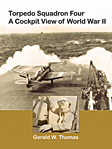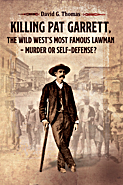|
|
||||||||||||||||||||||||
 |
||||||||||||||||||||||||
|
|
||||||||||||||||||||||||
|
||||||||||||||||||||||||
|
|
||||||||||||||||||||||||
 |
||||||||||||||||||||||||
 |
||||||||||||||||||||||||
 |
||||||||||||||||||||||||
|
|
||||||||||||||||||||||||
|
|
|
|
Norway to Tokyo |
|
By Donald M. Applegate, VT-4 |
||||||
|
I reported to Torpedo 4 (VT-4) at Quonset Point, Rhode Island on February 15, 1943 fresh out of radio school. After being given my aircrew instructions by Lightfoot, I took my first flight with Lt Lee L. Hamrick on February 18. Was I scared? Hamrick knew it was my first flight and he kept talking to me. He finally said, "Applegate, are you still back there?" I think my total conversation for the flight was "Yes, sir." After about a month, the USS Ranger came back from a P-40 cruise to North Africa with the other half of the squadron. My first carrier landing was with R. W. Labyak--#2 wire, smooth, and nothing to it. My next carrier landing was with Lt(jg) Felix E. Ward--#8 wire, first barrier, and rough! But after that I made many carrier landings with Ward—maybe not all smooth and easy but all good. We did a lot of flying in the North Atlantic and Newfoundland. We were ashore at Argentia when we heard the Ranger had been sunk by the Germans. We looked out in the bay and it was still there. Our first battles to date had been with the Seabees while on liberty. On August 9, 1943, we made a simulated attack on the HMS Queen Mary with Churchill aboard on his way to Halifax for a meeting with President Roosevelt. The ship then headed for Scotland and we did our shore-based flying from Hatston. On October 4, 1943, Ward, Don L. King, and I were part of the flight that attacked German shipping along the coast of Norway. Boy! Could those Germans shoot! After a lot of flying in the North Atlantic, crossing the Arctic Circle and becoming a "blue nose," a couple of night carrier landings, more flying at Ayer, Massachusetts, and torpedo drops at Hyannis, we got on a train and headed for the West Coast. After 3½ months at Hilo, Hawaii, we got aboard the USS Long Island and headed for the Pacific, where we transferred to the USS Bunker Hill at Saipan. Ward, Chuck J. Warrington, and I were part of the strikes on shipping in Leyte Gulf and Manila Bay. The Air Group then transferred to the USS Essex and for the next 4 months we took part in numerous strikes against the Japanese, including shipping off San Fernando and Luzon. The Essex was hit by a kamikaze while we were in our planes on the hanger deck with torpedoes in the bomb bay. No damage was done to our planes and we were launched within an hour. On a strike against Formosa, our plane was hit by A/A, knocking out our radar and IFF (Identification Friend or Foe). Ward and Hamrick did a lot of talking to get us through the clouds to check in with the picket ship and back to the Essex where we landed with no flaps. We took part in the first Navy air raid on Tokyo. My last strike was on an airfield on Okinawa. We then went to Ulithi, transferred off the Essex, and headed for the States. Up until this time in Torpedo 4, I had flown 589 hours and made 71 carrier landings. After my 30-day leave, I went to Miami to air crewman school to break in another Ensign. Thank God, the war ended before we got aboard another carrier. After hanging around for a couple of months, I was assigned to Torpedo 80. We were stationed at San Diego for 3 months, Maui for 3 months, and then aboard the USS Boxer. We made a cruise to Saipan, Hong Kong, Okinawa, and China, and then back home for a 30-day leave. This completed my Naval flying with a total of 745 hours and 82 carrier landings. Janice and I were married on September 22, 1946 and we were transferred to Alameda, California where I was discharged on March 7, 1947. |
||||||
|
||||||
|
Photo: Tom Sims, Don Applegate, and Gene Ganley, 1993. |
||||||
|
Air Group 4 - "Casablanca to Tokyo" |
|||
|
|
|||